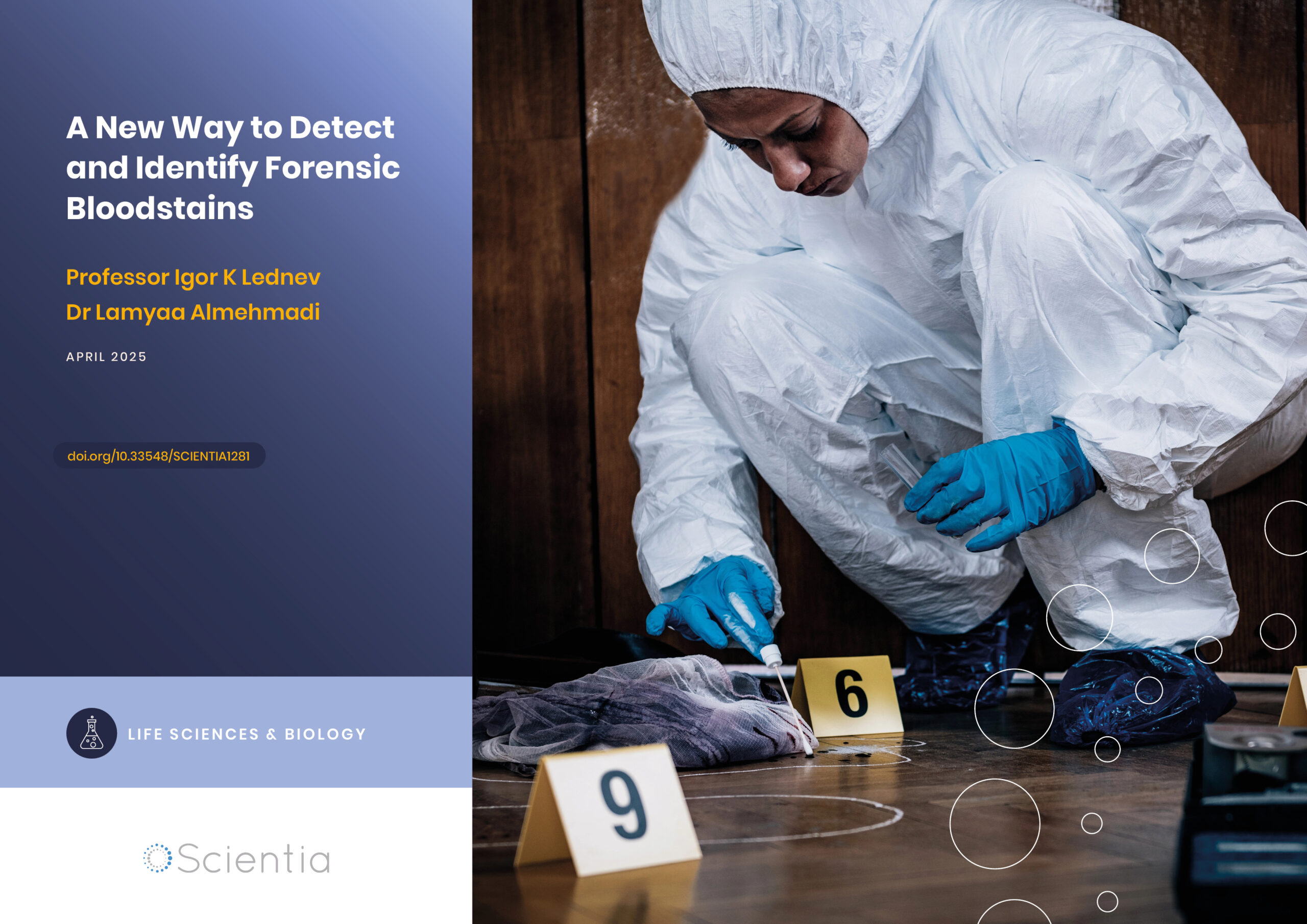Dr James G. Thomson – Lilac Limes: More Than Just A Pretty Fruit
Genetic technologies are becoming increasingly sophisticated, with scientists now able to precisely insert beneficial genes into plant genomes and accurately predict the activity of the new genes in the host plant. However, public acceptance has not kept up with the technological advancements in this field. Dr James G. Thomson and his team at the USDA’s Western Regional Research Center have developed Lilac Limes using this advanced genetic technology. This striking purple fruit could help to open dialogue with consumers and encourage greater acceptance of the use of genetic technology in food plants.
Introducing Lilac Limes
When is an orange not orange? When it’s purple, of course! The deep purple and reds of some citrus varieties, such as blood oranges, are due to natural pigments that are deposited in the fruit tissue as they develop. These citrus varieties are popular with consumers, and provide health benefits too, thanks to the antioxidant properties of the pigments.
Now consumers can look forward to a new variety of coloured citrus – the Lilac Lime – which, as its name suggests, is an attractive purple fruit encased in a green peel. In addition to the aesthetic qualities, Lilac Limes also offer additional health benefits over their green counterparts. But Lilac Limes are more than just an interesting new variety of citrus. They represent the culmination of years of genetic technology research, and their success offers promising new avenues for genetic technology use in agriculture to benefit both consumers and farmers.
The Lilac Lime was produced by Drs James G. Thomson, Kasturi Dasgupta and Roger Thilmony at the Crop Improvement and Genetic Research Unit of the USDA-ARS Western Regional Research in a collaborative agreement with the California Citrus Research Board by transferring the pigment gene from the blood orange into Mexican Lime plants. Thus, the pigment produced in Lilac Limes originates from other edible citrus varieties and is specifically expressed in the fruit. Limiting the colour to the fruit provides a crisp burst of eye-pleasing colour. Dr Thomson and his team hope these qualities will aid in the deregulation process and encourage consumer confidence in the limes.
In addition to developing and refining the technology to make Lilac Limes possible, Dr Thomson and his team also aim to navigate the complex regulatory process of bringing the fruit to consumers.

Genetic Technology and the Public
Modern genetic technology – in which beneficial genes are transferred from one organism to another – has been used to improve crop plants for many years. Previously, new plant lineages were created using this technology predominantly for the benefit of farmers. Crop plants have been imbued with the characteristics of faster growth, and disease and pest resistance, to allow the production rate of these valuable food plants to match consumer demand. While these genetically modified (or ‘transgenic’) plant lineages are vitally important for farmers to keep up with the food requirements of a growing global population, a key area that has received less attention is increasing public trust in transgenic foods.
Lilac Limes provide an innovative approach to introducing consumers to a transgenic food variety. With their novel purple fruit and associated health benefits, Dr Thomson and his team hope to attract the attention of consumers and thus open a dialogue with the public about genetic technology in citrus and in food plants in general. Having a visible characteristic – unlike other transgenic food plants – may help to increase the transparency of genetic technology, and improve public perception of transgenic food varieties. This could pave the way to acceptance for other transgenic citrus lineages, and indeed transgenic foods in general. With agricultural pests and diseases increasing in range and abundance, gaining consumer confidence in transgenic foods may become increasingly important in the future.
However, taking a transgenic plant lineage to the market is a difficult process due to the strict regulations surrounding these foods. Deregulation of transgenic food varieties – or removing government restrictions that prevent transgenic foods reaching the market – is notoriously complex. Therefore, a significant portion of Dr Thomson’s Lilac Lime project is devoted to navigating the deregulation process to take Lilac Limes to field trials, and finally to farmers and consumers. ‘Determining the exact procedure for getting approval is part of the learning process we hope to pass on to the Citrus Research Board for potential future transgenic citrus projects,’ he says.
Developing a clear procedure could vastly improve the deregulation process for future transgenic citrus varieties, and could also encourage other genetic researchers to pursue deregulation of their transgenic crop varieties.

Commercialisation of Transgenic Citrus
The gene that produces the rich purple colour in Lilac Limes was obtained from another edible citrus variety, the blood orange, and inserted into Mexican Lime plants. Dr Thomson and his team also identified control elements (promoters) that act to keep the pigment production confined to the fruit tissues, and genes that promote faster maturation of the plants. Lilac Limes still produce green peels and green leaves and reach their fruiting stage much earlier than traditional lime varieties.
‘Most citrus types need 5–15 years to begin flowering and fruiting. The long juvenile phase delays regular fruit production for years. Alternatively, early flowering has been achieved in transgenic trees, including citrus plants, by turning on a flower gene,’ explains Dr Thomson.
Confining pigment production to the inner fruit prevents the plants from wasting their finite energy resources on producing pigment in all their tissues. Transgenic lineages that produce these pigments throughout their tissues would typically grow smaller and produce fewer fruits, thus excluding them from commercial viability. ‘Use of tissue-specific promoters provides healthier plants that are not “overtaxed” by producing purple pigmentation throughout the plant without benefit, and possibly detriment, to growth,’ Dr Thomson explains.
The successful Lilac Lime lineages produced by Dr Thomson and his team are an improvement even in comparison to other purple and red citrus varieties already grown commercially. In traditional citrus varieties, pigment production requires a period of cold during fruit development for the colour to develop fully. Thus, farmers are at the mercy of weather conditions during each season.
With climate change altering average temperatures and weather conditions in many citrus-growing regions, the availability of these darker citrus varieties may decline in the future without the introduction of transgenic citrus lineages that produce pigmented fruit without the need for a cold period. Following the success of Lilac Limes, Dr Thomson and his team have the opportunity to incorporate the technology into additional citrus varieties to create other reliably-pigmented transgenic citrus varieties.

Genetic Technology Behind Lilac Limes
Previously, genetic technology has been inefficient and imprecise. Producing a transgenic lineage with the desired characteristics depends not only on the genetic material transferred, but also the location that the gene is inserted into the host’s DNA, and other limitations of the method used to transport the new genes to the host DNA. Without a way to control this process, a vast number of transgenic lineages would need to be produced to obtain just one in which the desired characteristics behaved appropriately.
Lilac Limes were developed by Dr Thomson and his team for use of a new approach to genetic technology, which removes some of the element of chance prevalent in other genetic technologies. Using a series of enzymes that work in harmony with each other, the insertion of the beneficial genes into the host plant’s DNA can be tightly controlled.
Each enzyme used in the technology recognises a specific sequence of DNA, allowing Dr Thomson and his team to control where in the host DNA the beneficial gene is inserted, and offering a method to insert multiple beneficial genes at once, called ‘gene stacking’. Additionally, these enzymes are more accurate in their transfer action – no extra DNA is lost or gained in the process, which prevents any unwanted side-effects arising in the transgenic plant lineages.
Dr Thomson and his team have produced hundreds of ‘Founder Lines’ – plant lineages pre-prepared with the required DNA sequence that the enzymes recognise – predominantly in citrus. These lineages provide the basis for the Lilac Lime varieties, but are also a basis for future transgenic varieties, such as citruses resistant to new or emerging diseases.
‘We chose citrus for a number or reasons but mainly to help combat the Huanglongbing disease, also known as Citrus Greening Disease,’ Dr Thomson says. ‘In theory, with the Founder Lines in place, we could precisely add any disease resistance genes discovered. Unfortunately, were still waiting for resistance genes to be identified. In the meantime, we’ve turned our attention to value added traits.’
While Lilac Limes have a single visible characteristic aimed at adding value for consumers, the Lilac Lime lineage is itself a Founder Line. This means that as new resistance genes are discovered for citrus pests and diseases, they could be incorporated into the Lilac Lime or alternatively, into Founder Lines without the purple pigment characteristic. Having Founder Lines ‘ready and waiting’ to have beneficial genes incorporated could provide the citrus industry with an unprecedented ability to adapt to new threats and challenges that arise in the future, providing that the beneficial genes are available.
Dr Thomson and his team are poised to take their Lilac Limes through the final stages of testing and scaling up growing efforts, through field trials. Consumers may have to wait a little longer before Lilac Limes reach grocery stores near them, but they could soon be looking forward to other varieties of transgenic citrus that benefit everyone, from farmers to consumers.
Reference
https://doi.org/10.33548/SCIENTIA474
Meet the researcher

Dr James G. Thomson
Crop Improvement and Genetic Research Unit (USDA-ARS)
Western Regional Research Center
Albany, CA
USA
Dr James Thomson earned his PhD in Genetics from Texas A&M University, before continuing his postdoctoral research into plant genetics at the University of California Berkeley’s Plant Gene Expression Center. Dr Thomson has over two decades of research in genetic engineering for use in agricultural crops and has contributed significantly to the improvement of this technology. Currently, he is a Research Geneticist at the Crop Improvement and Genetic Research Unit at the USDA-Agriculture Research Service’s Western Regional Research Center. In addition to developing the technology that has enabled the production of Lilac Limes, Dr Thomson also aims to expand this research into the process of transgenic food crop deregulation and open avenues for production and commercialisation of future transgenic varieties.
CONTACT:
W: https://www.ars.usda.gov/people-locations/person/?person-id=45854
KEY COLLABORATORS
Dr Kasturi Dasgupta, CA Citrus Research Board and Crop Improvement and Genetic Research Unit (USDA-ARS), Western Regional Research Center
Dr Roger Thilmony, Crop Improvement and Genetic Research Unit (USDA-ARS), Western Regional Research Center
FUNDING
CA Citrus Research Board (5200-140, 5200-141, 5200-142, 5200-155)
USDA-ARS (2030-21000-020-00D)
FURTHER READING
KF McCue, E Gardner, R Chan, R Thilmony, JG Thomson, Transgene stacking in potato using
the GAANTRY system, BMC Research Notes, 2019, 12, 457.
R Collier, JG Thomson, R Thilmony, A versatile and robust Agrobacterium‐based gene stacking system generates high‐quality transgenic Arabidopsis plants, The Plant Journal, 2018, 95, 573.
K Dasgupta, R Thilmony, E Stover, ML Oliveria, JG Thomson, Novel R2R3-MYB transcription factors from Prunus americana regulate differential patterns of anthocyanin accumulation in tobacco and citrus, GM Crops and Food, 2017, 8, 85.
Y Wang, YY Yau, D Perkins-Balding, JG Thomson JG, Recombinase technology: applications and possibilities, Plant cell reports, 2011, 30, 267.
JG Thomson, DW Ow, Site‐specific recombination systems for the genetic manipulation of eukaryotic genomes, genesis, 2006, 44, 465.

Creative Commons Licence
(CC BY 4.0)
This work is licensed under a Creative Commons Attribution 4.0 International License. 
What does this mean?
Share: You can copy and redistribute the material in any medium or format
Adapt: You can change, and build upon the material for any purpose, even commercially.
Credit: You must give appropriate credit, provide a link to the license, and indicate if changes were made.
More articles you may like
International Isocyanate Institute | TDI-induced Asthma: Reanalysing Data to Find Hidden Trends
Even if you’ve never heard of them, you’ve used polyurethanes. Producing them requires toluene diisocyanates, which may/can induce asthma when inhaled. A 5-year study claimed to conclude that cumulative TDI exposure over time was indicative of asthma incidence. However, a reanalysis by a team at the International Isocyanate Institute points the finger instead at the frequency of unprotected high-exposure events, like accidental spills or plant maintenance. This finding guides the way for future advances in worker safety.
A New Way to Detect and Identify Forensic Bloodstains
Accurately identifying bodily fluids at crime scenes is vital to aid forensic examinations and obtain information for use in criminal proceedings. However, collecting viable material for analysis can be challenging, especially if samples are difficult to access or the amount is minute. Dr Lamyaa Almehmadi and Professor Igor K Lednev at the University at Albany, State University of New York, USA, have introduced a new technique to assist in analysing bloodstains for forensic examination without compromising sample integrity.
Advanced Air Mobility National Campaign: Bridging the Gap
The rapid advancements in technology have paved the way for revolutionary changes in transportation, particularly air mobility. One such groundbreaking initiative is the Advanced Air Mobility (AAM) National Campaign led by NASA. This campaign aims to integrate advanced air mobility solutions into the existing transportation infrastructure, creating a seamless, efficient, and safe urban air transportation system. By addressing the various challenges associated with urban air mobility, the AAM National Campaign is poised to redefine how we navigate our cities, ultimately leading to reduced congestion, improved accessibility, and enhanced environmental sustainability.
Dr Niloofar Vardian | Mapping the Unknown: Inside Black Holes
Dr Niloofar Vardian at the SISSA school has advanced our understanding of black hole interiors through precise mathematical modelling. Her recent publication sheds light on previously inaccessible aspects of black hole dynamics, deepening our knowledge of these mysterious and difficult-to-study phenomena.




